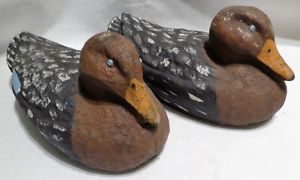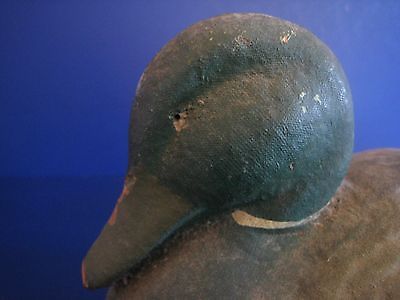In the late 1930’s waterfowl hunters were anxious to find a lighter option for their decoys other than wood. Carrying two dozen wood decoys into a marsh was like carrying almost 50 pounds of extra weight. The answer was soon to come from a company based out of Milwaukee, WI.
The Division Pulp Reproduction Company of Milwaukee began manufacturing and selling Carry-Lite decoys in 1939. Carry-Lite was the first paper mache decoy operation to gain notable success, but they were not the first paper mache decoy factory. The introduction of an inexpensive and disposable decoy in 1939 was timed perfectly for the marketplace. Carry-Lite initially produced mallard, bluebill, pintail, canvasback pairs and a single black duck. Later, their process expanded to include geese, owls, crow decoys and even corn cob decoys! Carry-Lite continued their paper mache manufacturing until 1969. They even got into the plastic Decoy business in 1956, which produced decoys from styrofoam. In 1968, an Italian Company named Sport Plast purchased the Carry-Lite Decoy Company and moved much of the manufacturing to Italy.
Carry-Lite decoys sold for about $12 a dozen and were all well labeled for identification by either a paper label on the decoy bottom or imbedded molding printing on the bottom. As you might expect, there were hundreds of thousands of Carry-Lite decoys sold and used in Wisconsin. One complaint from hunters was the fragile beak that was prone to breakage. In turn, Carry-Lite listened and developed a model called the dura-beak which was produced in the 1950’s and did prevent bill breakage. The head and beak was molded so the bill was lower to the body.
Many waterfowlers had these decoys in their spreads and some are still in service. You may have some of these decoys gathering dust in your garage or cottage. These decoys in good to excellent condition (no bill breakage, tears and with original paint) can be worth $75-$250 to collectors. The vast majority of decoys produced were mallards, so other species usually command a higher price. Check out your old decoys, you may have some Carry-Lite from your Dad or Grandpa that may be very collectible – and made in Wisconsin.
History provided by “North American Factory Decoys” by Kenneth Trayer and value from “Worman’s Duck decoys” by Russel Lewis.


